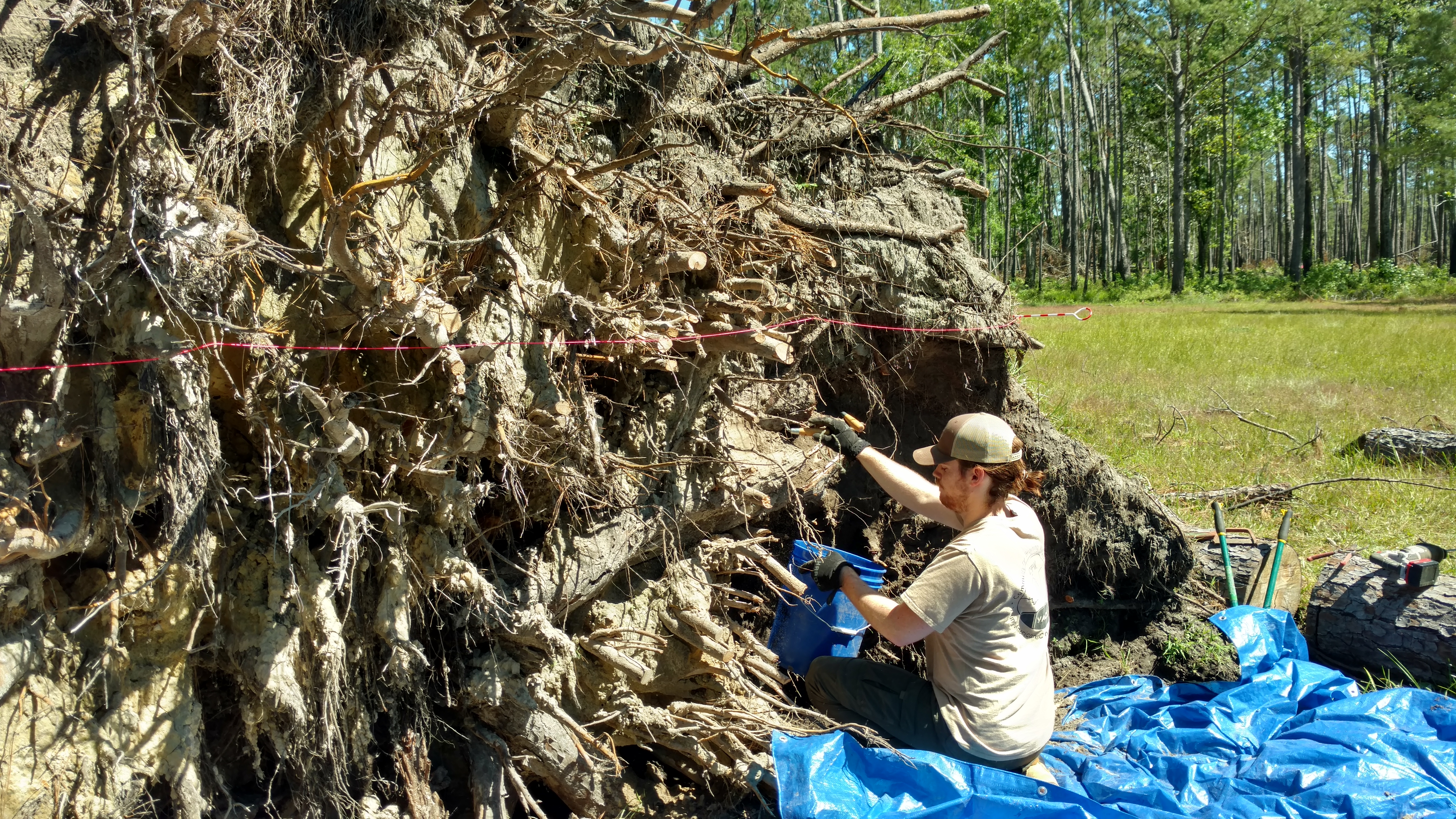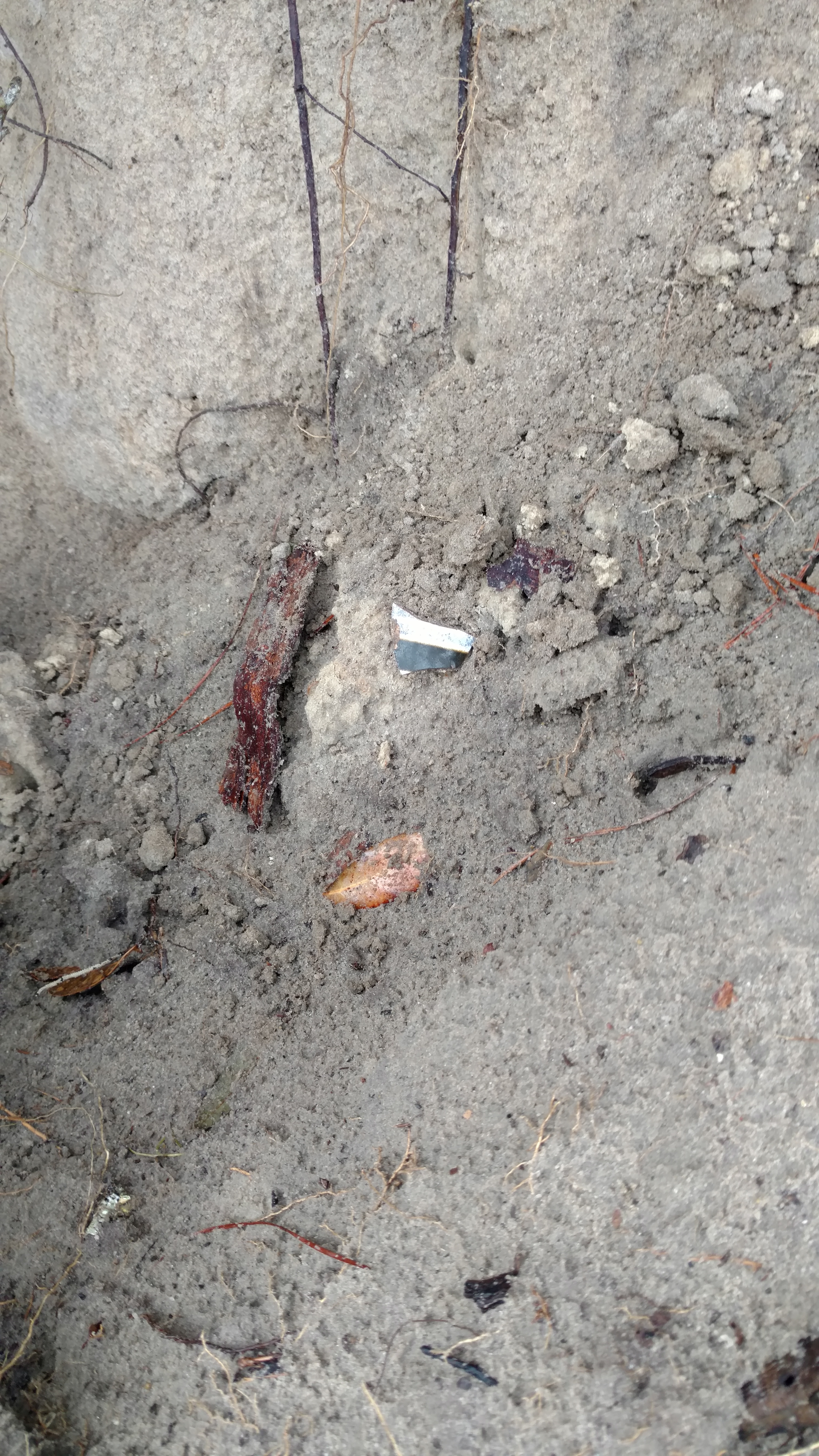Hurricane Michael Unearths Evidence of Fort Occupied by Hundreds of Freed Slaves

Tangled up in the root balls of enormous trees toppled by Hurricane Michael, which ripped through Florida last October, was an archaeological treasure: ammunition and artifacts from Fort Gadsden, a site occupied by one of the largest communities of freed slaves in the early 1800s.
On July 27, 1816, the U.S. Navy was firing shots at the fort (then called the "Negro Fort"), when one shot hit a storage unit filled with ammunition, leading to an explosion that killed hundreds of African Americans.
Some of that ammunition, along with a number of other 19th-century artifacts from the fort, recently came to the surface when the Category-5 hurricane ripped up trees in the area. [Photos: 19th-Century Artifacts Uprooted from Fallen Trees]
The fort site has been closed to the public because of the damage from the hurricane.
But "while we were reeling from the shock of the impact of the storm," the site was listed under the National Park Service's Underground Railroad Network to Freedom, which made the spot eligible for grants, said study researcher and archaeologist Rhonda Kimbrough, heritage program manager with the National Forests in Florida, part of the U.S. Department of Agriculture's Forest Service.
Soon after that, the Southeast Archeological Center, part of the National Park Service, in collaboration with the Forest Service, received a $15,000 grant to excavate the artifacts uprooted by the storm, as was first reported by the Tallahassee Democrat.
History of the "nexus of freedom"
"This site is really a pivotal point in our nation's history," Kimbrough said. It was the "nexus of freedom and slavery resistance."
Sign up for the Live Science daily newsletter now
Get the world’s most fascinating discoveries delivered straight to your inbox.
The fort, part of the Prospect Bluff Historic Sites in Florida, was built by the British during the War of 1812. Occupying the site were former slaves called Maroons, freed by their pledge of allegiance to the British military. But they lived alongside a mix of different cultures, including Red Stick Creeks (the anti-U.S. faction of a Native American tribe that had fled to the site after the Creek War of 1813-1814), a faction of Choctaw and other tribes, and, of course, the British.
For the next couple of years, at any given day, as many as 3,500 to 5,000 people were living there, Kimbrough told Live Science. But when the War of 1812 ended, the British left the fort at the helm of a former African American slave and left the area. Without the British settlers, the fort's population fell significantly. [10 Epic Battles That Changed History]
In 1816, U.S. forces attacked the fort. A week of fighting ended in devastation for the fort's occupants when a single shot from the U.S. troops blew up the stash of ammunition, killing around 270 of the 320 people still living there, Kimbrough said. Those who didn't die immediately later died from their injuries or at the hands of the U.S. forces.
"It was just devastating," Kimbrough said. When you "have that kind of explosion from what had been a storehouse of military weaponry, you're going to have stuff scattered everywhere, just everywhere."
Root balls tangled up in history
Indeed, when Hurricane Michael uprooted around 100 of the site's trees — mostly oaks and pines, with a few magnolias — the storm also uprooted musket balls and other military artillery. Tangled up in the mix were 19th-century European ceramics, such as blue-shell-edged pearlware, brown salt-blazed English ceramics and majolica, a type of colorful Italian pottery.

Through a process called bioturbation, various organisms had, over the years, churned the soil and buried the artifacts deep in the ground.
The trees moved the artifacts around with their roots and blanketed the objects with leaves. Tortoises and other animals aided the process by burrowing holes, and humans did their part by trampling the grounds, logging and extracting turpentine. Even weather events, such as storms and winds, participated in the cover-up.
But now, archaeologists are trying to figure out which pieces belonged to which cultures. The researchers hope to eventually find a ceramic type or a cultural marker that they can use to say definitively whether an artifact comes from a maroon community, Kimbrough said.
Archaeologists are also comparing what they found and where they found it to historical records, including an 1815 map that depicts the locations of fortifications, houses and other structures.
- 10 Historical Treasures That the World Lost in the Past 100 Years
- 30 of the World's Most Valuable Treasures That Are Still Missing
- 10 Amazing Modern Societies You Won't Believe Are Real
Originally published on Live Science.

Yasemin is a staff writer at Live Science, covering health, neuroscience and biology. Her work has appeared in Scientific American, Science and the San Jose Mercury News. She has a bachelor's degree in biomedical engineering from the University of Connecticut and a graduate certificate in science communication from the University of California, Santa Cruz.










